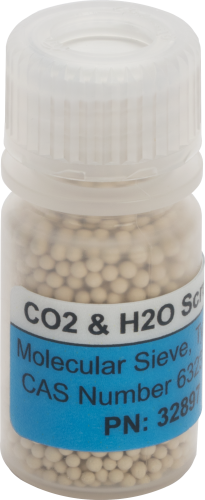
Overview
The 32897 contains two desiccant/scrubber bottles utilizing a non-hazardous molecular sieve. These are maintenance replacement parts for the EC150 and IRGASON. Each bottle contains necessary chemicals and membrane filters for scrubbing CO2 and water vapor from the gas analyzer housing. Empty chemical bottles should be disposed of according to local and federal regulations. SDS (Safety Data Sheet) forms for the chemicals are included in the EC150 and IRGASON manuals.
Read MoreImages

Detailed Description
The 32897 is the chemical bottles assembly provided with the EC150 and IRGASON. Two bottles are included and contain a non-hazardous 13X molecular sieve composed of zeolite material to scrub CO2 and H2O from the gas analyzer housing.
Specifications
| Amount | 22 g (0.78 oz) |
| Diameter | 2.49 cm (0.98 in.) |
| Height | 5.89 cm (2.32 in.) |
| Weight | 45.36 g (0.1 lb) |
Related Documents
Technical Papers
Compliance
Listed Under
FAQs for
Number of FAQs related to 32897: 4
Expand AllCollapse All
-
The molecular sieve is a non-hazardous material that can be shipped to any country.
-
The molecular sieve is a direct replacement for the old magnesium perchlorate bottles. The molecular sieve may be used for any Campbell Scientific analyzer that used the old bottles.
-
The bottles of sieve for drop-in replacement contain the pellets and a membrane on top. The membrane is necessary to keep the pellets contained while allowing gas to pass over the zeolite. The bottle has the same footprint as the old magnesium perchlorate bottles. The amount in each bottle is listed on the bottle. The amount of sieve needed for each analyzer is the following:
- The EC150 needs 22 g (drop-in bottle).
- The IRGASON® needs 22 g (drop-in bottle).
- The EC155 needs 22 g (drop-in bottle).
- The AP200 needs 500 g (refill).
- The 27423 needs 1000 g (refill).
- The 31022 needs 500 g (refill).
-
The molecular sieve has been demonstrated here by our engineering department to be effective at removing CO2 and H2O from the air sample. The change was made for two reasons:
- It was a safer alternative than using the previous chemicals.
- Increased shipping regulations for the chemicals limited the number of suppliers.